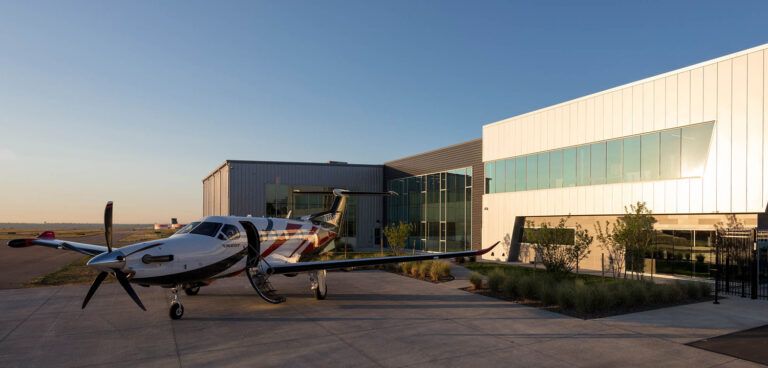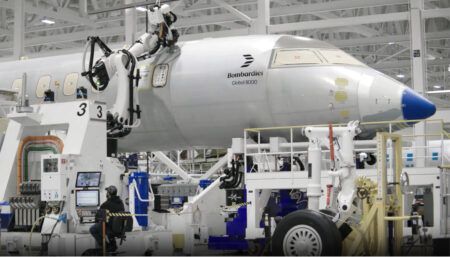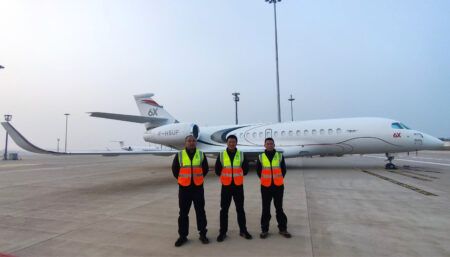Pilatus has opened a new completions facility for its PC-12 NG single-engine turboprop and the new PC-24 Super Versatile Jet in Broomfield, Colorado. The custom-built facility will complete interior and exterior work for customers based in North and South America.
The 118,000ft² (11,000m²) facility features fabrication and installation shops, along with spare parts inventory and offices for technical support personnel and business management groups. Pilatus has operated at this site, at Rocky Mountain Metropolitan Airport, for more than 20 years.
“We are proud to be able to continue producing and supporting the industry’s highest quality aircraft here in Colorado,” said Thomas Bosshard, president and CEO of Pilatus Business Aircraft. “Over the past 20 years we have built up a tremendously talented workforce that maintains the high-quality standards set by our Swiss parent company.”
The North and South American markets make up 60-70% of consolidated annual Pilatus business aircraft sales. The company says its new facility will enable it to customize aircraft for individual customers and respond quickly to changing market demands.
Typically, around 55 PC-12 NG aircraft are completed in Broomfield each year, and the company plans for an additional 25-30 of its new PC-24 Super Versatile Jets to flow through the facility annually. Pilatus expects to increase employment by approximately 30% over the next three years to handle this growth.
“Pilatus is truly a global company – in our operations, in the diversity of our workforce, and in meeting the demands of our customers,” said Bosshard. “Staying close to our customers, listening to their needs, and providing them with top-notch service is the key to our long-term success.”
Saying that skilled craftspeople are becoming increasingly difficult to find, Pilatus has introduced an apprenticeship program to meet growing needs. Modeled after the apprenticeship system common in Switzerland, the Broomfield company applied this employee training, education and development program to its US workforce. By combining on-the-job training and formal classroom education, apprentices are paid to learn trade skills, earn a college degree and be ready for the workforce with no college debt.





